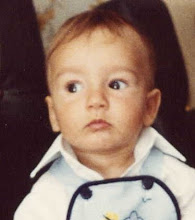
Last week I went to see a doctor, for the first time as a private entity, making use of my personal health insurance. No worries, it is nothing serious, just a knee injury that is having some problems in healing completely. The whole process is far from clear to me, specially when you have three parts involved: a Portuguese patient, a Chilean clinic and an international (English) insurance company. Let's put it like this:
Act 1: The Insurance CompanyI first contacted the company, since I'd never used the insurance before. They have a neat and fairly efficient online chat service. I explained my problem and they said that for just an appointment with the doctor I would have to pay for it myself and then send a claim back to them for reimbursement. In case I would need an expensive exam, like an imaging or x-ray, I would have to call them before doing it, for pre-authorization, and they would deal directly with the clinic. Sounds nice if it all works well, but it is a complete black box to me. And to the clinic?...
Act 2: The ClinicI went to the same clinic I do my annual work examinations, since it is indeed a good and credited clinic. It looked expensive as well, but that is the insurance company's problem, not mine (I hope!!). I went directly to the orthopaedic floor and asked for an appointment at the reception, hoping that I could have it the next day. She makes a couple of phone calls and tells me:
-"You can pay here and after you can go directly to room number 4."
-"Will the doctor see me now?!"
-"Yes."
-"So... I just pay and don't even have to wait for someone to call me?!!"
-"Yes. Room number 4."
Ok, I had to pay 50 Euro just for the appointment and yes, it is a private clinic, so service is usually better, but I was still surprised. I paid and went to room number 4...
Act 3: The DoctorThe doctor was young, but very friendly. I had to answer the usual Chilean questionnaire: where are you from, what are you doing here, for how long, do you like chile, what do you think about Chilean women, etc... Then he examined me, made a lot of movements with my leg and told me that I had nothing serious, that I basically needed to give the knee some rest, prescribed some medication for the inflammation and that I should go back if it didn't disappear in a couple of weeks. 50 Euro for 20 minutes... I start searching for the claim paper that the doctor had to fill in, thinking already if he would know how to fill it in, specially because it was in English (not very popularly spoken across Chile):
-"Do you need me to fill something in for the insurance?"
-"Yes, here it is, it seems you have to fill in this part. It is in English..."
-"No problem, I was two years in New York studying."
-"Great, and are you used to filling in this kind of papers?"
-"Yes, but they are normally smaller."
Ok, I was impressed again...
EpilogueI come out and remember the part that the insurance would contact directly the clinic for pre-authorization of exams or treatment. I ask the receptionist:
-"You know, my insurance company said that they would contact you in case any exam would be needed, but I'm not sure how this is done..."
-"Yes, they send a paper like this and they pay us directly."
-"So, you are used to this system, no problems?..."
-"Sure."
Yeah, sure! I'm glad it all seems so straightforward, at least for someone... I came out of the clinic and faced the Andes, covered in snow. A beautiful sight, rarely seen in a smoggy Santiago. In general, private healthcare in Chile is very good. One can live well in Chile, "if you are not poor..." as someone told me. I may go back for the exams, I'm curious to see how the sequel of this play ends.
 Winter seems to be gone in Santiago. When I arrived at Santiago airport for another rest shift, the temperatures had gone from close to zero to an astonishing 20ºC during the night. The next day I woke up with a beautiful warm and sunny day. Time to open doors and windows, greet the spring and let the sunshine in. I spent the whole afternoon in the garden, together with Michi, the cat, enjoying the sun and reading. The garden had grown wild during the rainy days, it was green everywhere. We started working on it, cutting tree branches, removing the weeds and the leaves, giving it a cleaner look and also preventing future insect plagues. Gardening is fun and clears your mind, but it will take its time until it is finished. We need more hands!
Winter seems to be gone in Santiago. When I arrived at Santiago airport for another rest shift, the temperatures had gone from close to zero to an astonishing 20ºC during the night. The next day I woke up with a beautiful warm and sunny day. Time to open doors and windows, greet the spring and let the sunshine in. I spent the whole afternoon in the garden, together with Michi, the cat, enjoying the sun and reading. The garden had grown wild during the rainy days, it was green everywhere. We started working on it, cutting tree branches, removing the weeds and the leaves, giving it a cleaner look and also preventing future insect plagues. Gardening is fun and clears your mind, but it will take its time until it is finished. We need more hands!






